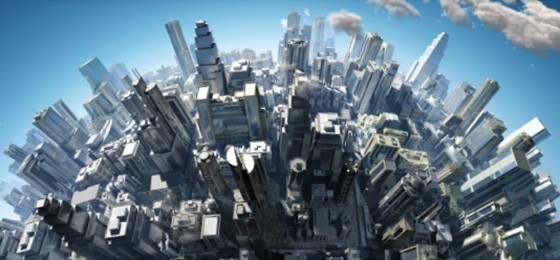MEGACITIES: Striving for Sustainability

By Kerry Connell
If you are like most people, you might say that a city is a big town with large buildings. Other components of a city are sidewalks, subways and streetlights— all inanimate objects. Cities, and the infrastructure that supports them, are not usually considered to be living things, but in many ways, they almost are. Cities expend energy, they use water and they produce waste. And if a city is a living thing, then a megacity is an even greater animal.
Megacities are metropolitan regions that incorporate a city (or two or more converging cities) and include a series of connected infrastructure systems. To be considered a megacity, the region’s population must total at least ten million people. Most people who live in these megacities spend the majority of their time living and traveling within them, from suburban home to city office by commuter railway, car or other transport. City dwellers may enjoy the luxury of walking to work, while people in adjacent suburbs or small towns may never even enter the city center. But they all make up the human factor that megacities require to function. And humans, who consume, produce and transport energy, resources and waste, are what bring life to cities and megacities.
Globally, scientists have identified 27 megacities as of 2010. Tokyo (37,900,000 people), Jakarta (30,326,103 people), Seoul (26,100,000 people) and Delhi (25,703,000 people) are the biggest, but megacities exist all over the world. Rome is generally considered the first very large city; by the end of the first century B.C., its population was more than one million. By 1900, London counted more than five million people. In 1950, New York City became the first human population center to pass ten million—the threshold for today’s megacity.
In 1800, just three percent of people lived in cities, but today, about 3.2 billion people, or nearly 50 percent, are city dwellers. The United Nations predicts that five billion people, or three in five, will live in cities by 2030. The number of megacities is expected to reach 37 by 2020. These regions generate 14.6 percent of our world’s total GDP, but they also consume a disproportionate percentage of resources. The rapid urbanization of modern megacities creates a strain on infrastructure that, if unabated, could easily lead to the failure of the very systems that brought the city about to begin with.
In addition to the many environmental challenges that such huge populations present, the limits that city conditions may place upon an individual’s ability to experience happiness and security can be vast. Insufficient housing and transportation that simply cannot keep up with growth can lead to the development of slum conditions within and around large cities. Homelessness, crime and other social ills tend to increase with population and with concentration. Educational services, health care systems and sanitation services that do not keep pace with population growth can result in less than ideal conditions. But what about the purely environmental concerns that affect the life of the megacity organism and the world it inhabits? According to a study titled “Energy and material flows of megacities,” published in Proceedings ofthe National Academy of Sciences, the megacities of today are home to only 6.7 percent of the world’s population, but they are responsible for nine percent of the planet’s electricity use, ten percent of its gasoline use and 13 percent of its solid waste generation.
Classroom Discussion:
- What steps can be taken to reduce the overall energy footprint in megacities?
- How is it different from smaller cities or more rural areas?
- Would you rather live in a megacity, smaller city or a rural area? Why or why not?
Vocabulary
- Infrastructure
- Urbanization
